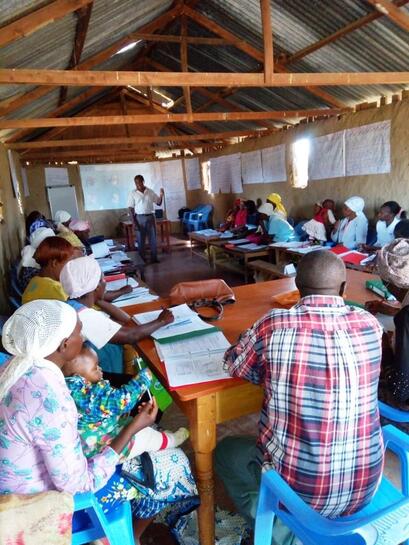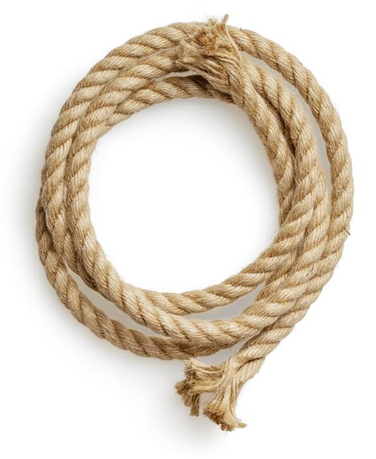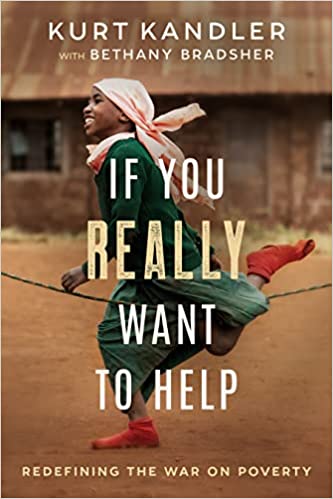 Every good story has two key aspects. A good story has a conflict to overcome, and a hero that overcomes it. We all love a good hero. The war on poverty is like that. It’s a conflict that needs to be overcome and it has a hero. But all too often we think the hero of the story is us. It’s not. Here’s a true story that illustrates what I’m talking about. I was invited to a small rural community in Honduras by a safe water organization. The purpose of the visit was to evaluate the leadership and determine if 410’s development model would be welcome. I was accompanied by a couple donors that wanted to see how we vetted communities and community leaders. It was a typical rural Honduran community. The community was very poor with no school, no economic activity, and little hope or opportunity. It did, however, have a small safe-water project recently completed by the organization that invited us. It's Not Them... While walking through the community, we visited the home of a middle-aged man named Santos. He lived with his wife and three children in a ramshackle home with a dirt floor and a curtain separating its two rooms. Santos welcomed us into his home. Our conversation centered around his family and his community. I love to find out what people like about living in their community. What strengths and gifts do they have? Is there anything that they do so well that they could teach others? These conversations help them, and us, see beyond the obvious needs and focus on their strengths and gifting. During the conversation, we learned that Santos was the custodian of the local water project. Although the water project paid him to oversee it, the gap between Santos and the poorest members of his community was not very wide. After a warm and friendly visit, we thanked Santos and his wife for their hospitality, and we continued our walking tour of the community. It's Not You... Later that night, I was talking with the two donors that accompanied me and one of them confessed. “I know you’re not going to like this, but I gave Santos twenty bucks.” “Really…? Why?” I replied, struggling not to show my displeasure. “Yeah, well… I know what you’re going to say, but he needed it. It was just a 'mere' 20 bucks!” The "mere" has multiple levels: Other than the very real possibility that the next gringo to visit the community may likely be asked for a handout, a mere (“mere” to us) twenty dollars provided yet another reason to see the affluent North American as the provider. And, still more insidious, another reason for a husband and father to feel emasculated in front of his family. A little more thought… a little less expediency… and the local Church could have emerged as the hero. I explained to my well-intentioned friend that there is a healthy way to help, and an unhealthy way to help. It starts with separating what we give, and how we give it, from our need to feel good about ourselves. In this case, he missed a priceless opportunity to allow the local church to be the Church. Instead of an “Andrew Jackson” handshake, he could have merely found out where Santos attends church. We could have talked to the leaders and the pastor of that church and allowed them to navigate help for Santos’s family. Another important point here… Santos had a job! He wasn’t the neediest in the community and the local church knows that better than anyone. He was being paid by the community to manage the water project – a place Americans commonly visit. How will the community feel when (not if) they learn that Santos accepted money from people visiting his home and the water project? It's the Church... In all we do, we should insist on making the local Church the hero whenever possible. Notice I said “Church” (big-C). In our context, walking alongside a single church in a community can create division and jealousy. That’s why we work hard to unify the local churches through pastor’s fellowships, participation in Leadership Councils, and integrating church-led discipleship into the humanitarian programs. The results are incredibly encouraging, and in some cases amazing. Pastors and Christian leaders put aside their differences and work together. Imagine that! Churches fundraise for each other. Pastors teach in each other’s churches. Churches become—collectively—the hub of the development effort and the voice of the people. The hero… ~ Kurt In his book – If You Really Want to Help – Kurt lays out a fresh blueprint for redefining the war on poverty, how to win it, and how we fight the battle together. His book will be released February 28, 2023 and is available for pre-order here.
0 Comments
 I used to think that education was the backbone of development. I was wrong. It’s economic development. Sure, education is a critical component in breaking the cycle of extreme poverty, but the reality in the communities where 410 Bridge works is that the primary barriers to a quality education can be eliminated by lifting household incomes. A family’s inability to afford school fees or a uniform are examples of why a child doesn’t attend school. Kids are dependent. Even if we’re successful in lifting the quality of education in a school, those initiatives can’t be indigenously sustained without adequate resources within the community. That’s one of the reasons why economic development trumps education as the backbone. Create Employers But here’s the thing… Most folks, when they think about improving the economic situation, limit their thinking to jobs. People need jobs, and an educated workforce is essential for people to get employed. The prevailing wisdom is that if we invest more resources in education, more people are employable. They’re not necessarily wrong. But the problem in rural developing world communities is that large employers do not exist. The only way to find employment is to move to urban centers and, unfortunately, finding a job in the city is more of a myth than a reality, so the cycle continues. That’s why we see more success when we help create employers, not employees. Morrine's Story In my new book – If You REALLY Want to Help – I share a story of Morrine that illustrates the point. Morrine lives in a rural Kenyan community where the average household income is less than $2.00 per day. Morrine attended and graduated from 410 Bridge’s Business Start-up Training (BST). She was in a class with 25 entrepreneurs from her community. At the time, she sold chips (french fries) at the back of a trading center. She had one small fryer and was struggling to make $10 a month. During the training, she learned basic business skills that taught her how to sustain and grow her struggling micro-business. By continually identifying new opportunities, Morrine transformed her business to a restaurant serving different types of food. Her initial investment was $35. Bigger Than Her Morrine hired 2-3 of her neighbors to work in her restaurant as she launched her second business - a salon & cosmetics shop. Within 18 months, Morrine employed eight of her neighbors. If you do the math, Morrine’s initial investment of $35 now generates over $1,000 of increased household income for nine families. That’s 2x more than the average household income. Morrine affords her children’s school fees and sponsors other children in her community to attend school. And just so you know… According to the Global Poverty Project, women reinvest up to 90 percent of their incomes back into their families and communities (compared to just 30-40 percent for men). No Hand-Outs It’s important to note that Morrine started her business with her own capital. The 410 Bridge provided the training of how to start, and operate, a God-honoring profitable business. The cost to train Morrine was about $250, but she was required to start her business with her own seed capital. No hand-outs. No micro-loans. No subsidies. The best news is that there are dozens of people like Morrine in her community, and thousands more in other 410 Bridge communities. People with potential stories of true transformation - economically, socially, and spiritually. Like… Francis in Kiu… Wholesaler / distributor. Initial investment - $10. Within a year of his training, he employed two people, generating $400 of additional household income every month. Chris in Kahuria - Cinema and billiards. Initial investment - $5 and a small TV. He employees four people, generating over $500 of additional household income every month. [Side note: I met Chris several years ago and was so impressed with his story that I included it in my book. He told me, “Before the BST training, I was a nobody. I was an orphan who had nothing. I was a nobody. But today I am someone! I even have a wife. I own one acre of land that I farm and I’m working on getting my second cow.”] Creating Employers Here’s my point… The 410 Bridge is redefining the war on poverty. We’re re-defining what it means to win it, what it means for the people living in extreme poverty, and most importantly, how we fight the battle together. Part of the ‘redefining’ means we need to rethink traditional thinking. Investments to create employers is not just better educated, but unemployed, employees, is one of the ways that we’re doing that. Simply educating the next generation isn’t good enough. The people we serve are capable, industrious, and creative. They are the solution to their poverty problem. ~ Kurt In his book – If You Really Want to Help – Kurt lays out a fresh blueprint for redefining the war on poverty, how to win it, and how we fight the battle together. His book will be released February 28, 2023 and is available for pre-order here.  In my new book – If You REALLY Want to Help – I share a story of an object lesson we’ve been using with community leaders since the beginning of 410 Bridge. It goes something like this… When we meet with leaders in the early days of a partnership, we present a long piece of rope and ask one of the leaders to hold one end of a rope while we hold the other. We use the rope to describe their community’s relationship with 410 Bridge by attempting to move the leader by pushing the rope. While we’re pushing the rope, we ask the leader at the other end why they are not moving! The illustration gets lots of laughs. The solution was obvious: for us to go anywhere together, the leader had to pull us. The leader also has to know where they are going; meaning the leader was good with their own vision. If they lead, and we follow, we can go a long way together. The illustration, while simple, has been effective. Unfortunately, it’s a major blind spot in the West and how we engage the poor. Major Blind Spot We (the West) don’t ask. Even if we do, we typically don’t listen. We have the money and the idea, and therefore we think it should be done our way, at our pace. After all, we know better, and they (the poor) should be grateful for our help. Right? But what if we paused, and instead of rushing to the solution we became learners? What if we truly saw ourselves as guests in their community who were invited (literally) to walk with them on their journey of development? The answer is clear, and we see it happening in 410 Bridge communities around the world. Communities mobilize without us; not waiting for us to do ‘for’ them. They lead. We follow. They own both their problems and the solutions. Our role is to be a catalyst for change and to help them go further, faster. We do not direct, control, or sustain. This happens in every successful 410 Bridge community. But that’s the easy part. The hard part is on our side of the bridge. We in the West tend to be impatient. Love Affair With Efficiency We have a love affair with efficiency. Time has authority in our world — we expect things to happen quickly and efficiently — because after all, it’s our time and money that made this happen. Right? Here’s an actual story of what this looks like. It’s just one of many. Several years ago, a group of American doctors visited one of The 410 Bridge’s communities to work in a health clinic that the community built with many of their own resources. It was from this trip that I came to learn just how well the leaders in the community understood the rope illustration. The volume of patients who visited the clinic on the first day was much smaller than any of the U.S. doctors expected. So, they asked the local leaders, “Why aren’t more people coming to receive medical care from us?” “It may be that they cannot afford to pay,” their hosts replied. Refusing To Listen This was entirely unacceptable to the U.S. doctors. They reminded the leaders that they hadn’t traveled this far at such great sacrifice and expense to charge people for medical care. Afterall, they were on a mission trip, and they expected their services for free. The leaders clarified as graciously as they could that, no, they did not plan to pay the doctors, but for the clinic to survive, they had to charge a small fee to cover the resident nurse, security guard, and most importantly the medications. But the doctors refused to listen. Their church was a sizable donor to the project, and they simply would not offer their assistance any other way; thinking, once again, that they really were helping. The local leaders stood firm at first, but as almost always happens, they eventually capitulated. Word quickly spread that the medical care was free. The next day, huge crowds showed up and kept the team busy. At the end of the day, many people left the clinic having never seen a doctor. The rumblings of frustration in the community reached my office within a week after the well-intended doctors returned to their practices in the States. They left the clinic having dispensed all the medication and leaving the community with no way to replenish their stock or pay the staff. Whose Clinic Is It? During my next visit, just weeks after the doctors had departed, I attended a ‘spirited’ meeting with the leaders. They said, “you say that this clinic is ours. You say that you expect us to lead our community and indigenously sustain the development. Yet when Americans come, they act as if the clinic is theirs because they helped us build it.” They continued, “Your team of doctors did not listen or respect our leadership. Please tell us again, is this clinic ours, or is it yours?” It was the right question. I apologized and reinforced that the clinic was their clinic and that we would make it right by helping them replace the drugs that the doctors dispensed for free. I was grateful that our friends were bold enough to confront us and to challenge the Western donor’s mindset that, while well-intended, undermined our goal of enabling the self-developing capabilities of the people. The community graduated from their partnership with 410 Bridge years ago. Today, they continue to sustain their clinic without outside resources. They’ve done the same with their water projects, school, and other community programs. I love to see leaders and their communities recognize that they are, in fact, empowered and gifted by God to do more than they ever thought possible. That can only happen when we, on this side of the bridge, separate what we give, and how we give it, from our need to feel good about ourselves. ~ Kurt In his book – If You Really Want to Help – Kurt lays out a fresh blueprint for redefining the war on poverty, how to win it, and how we fight the battle together. His book will be released February 28, 2023 and is available for pre-order here.  I turned 60 a couple years ago. I hadn’t struggled with starting milestone-decades before, but the decade with a 6-handle felt different. It meant I was entering the fourth quarter and there wasn’t going to be overtime. What changed the most was a newfound, palpable, sense of urgency to focus on the things that I said I was going to do but hadn’t. The big things. The things that needed to get done. One of those things was writing the book. It was something that people in my life kept pestering me about (in an encouraging way). “Kurt, when are you going to write that book?” “Kurt, how’s that book coming?” The first problem… I never thought of myself as a writer. I love telling stories but converting the spoken word – full of facial expressions and animated body language – to the written word is not on my list of gifts. But this was the start of the fourth quarter. If not now, when? The second question…. Why this book? When we started 410 Bridge in 2006, we knew we wouldn’t be successful without generous support from this side of the bridge. What wasn’t so obvious at the time, but quickly became clear, was that while Western support was essential, it wasn’t enough. If we were really going to make a difference, we needed to change the paradigm of how the West engaged the poor. If You Really Want to Help is just that. It tells the story of how 410 Bridge came to be and lays out an approach to extreme poverty that doesn’t see the poor and as a set of problems to be solved – a water problem, education problem, economic problem, or health problem. It sees the poor as the solution to their poverty problem. In this book, I try to convey a foundational principle. When we define poverty as a material problem, our interventions will be solely financial. I find it fascinating that we (this side of the bridge) haven’t learned, or perhaps it’s just easier to ignore, that purely economic interventions do not solve the poverty problem. A better solution, if you really want to help, is to recognize that poverty is in issue of worldview – how people think, the story they tell themselves to be true. The Story of Us If You Really Want to Help describes our origin story, strategy, methods, successes and yes…. the many missteps along the way. It shares stories of real people who have been impacted by 410 Bridge’s work around the world. Impact that is measured against outcomes and is indigenously sustainable. In the end, if we’re really going to help the poor, it starts with correctly defining the problem. And if we’re really going to help the poor shift their worldview from whatever it is today, to a worldview that helps them thrive and live an abundant life, we must start by changing how this side of the bridge engages. ~Kurt In his book – If You Really Want to Help – Kurt lays out a fresh blueprint for redefining the war on poverty, how to win it, and how we fight the battle together. His book will be released February 28, 2023 and is available for pre-order here. |
About Kurt:Kurt Kandler is the founder and Executive Director of The 410 Bridge. He is passionate not only about breaking the cycle of poverty in communities where The 410 Bridge works, but but also for changing the paradigm of mission for the Western church and how it engages the poor. Archives
February 2023
Categories |
 RSS Feed
RSS Feed